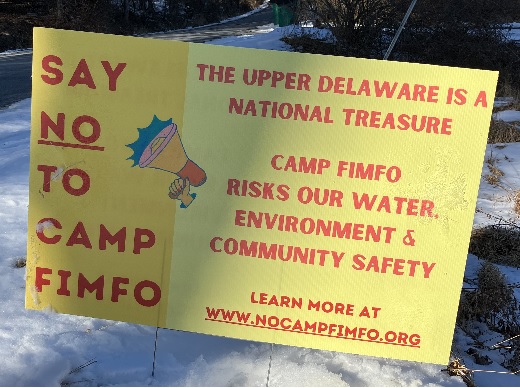Key Impacts of Dirty Drilling
October 17, 20133 Current Risks from Fracking
October 19, 2013By Peter Mantius, The Leader, October 16, 2013
A major rock fault cuts through the cluster of old salt wells under the western hillside that rises from Seneca Lake three miles north of Watkins Glen. The fault runs north-south, parallel to the lake about 700 feet from shore through an array of smaller faults and fractures.
It’s no surprise that the midwestern energy company that wants to use several of those wells to store explosive natural gas products seeks to bury those unsettling geological facts.
What is surprising — and disturbing — is that the New York State Department of Environmental Conservation (DEC) is willing to help it keep the secret. Agency lawyers control the flow of public information on the project, and they have wielded their black magic markers with gusto, withholding entire documents or selectively redacting portions that the company deems proprietary.
“Anything about the fault is redacted in the DEC material,” H.C. Clark, an eminent Texas geologist, wrote recently to a lawyer for a citizens group opposed to the storage plan.
“This is amazing,” wrote Clark, an emeritus professor at Rice University in Houston who holds a Ph.D. in geophysics from Stanford. “In Texas … the outcome of environmental matters such as these do not always work out as we would like, but at least we know about what is happening. The information is public. Redaction is not what I expected from New York.”
The DEC has been reviewing the case since 2009, when Kansas City-based Inergy LP applied for a permit to store liquid petroleum gas, or LPG, in wells less than a quarter mile from the large fault. In 2011 Inergy bought NYSEG’s leased natural gas storage operations at the site. Now Inergy is asking the Federal Energy Regulatory Commission (FERC) to let it expand its gas storage there to adjacent wells even closer to the fault.
The company’s bid for new natural gas and LPG storage capacity was spurred by demand from gas drilling in Pennsylvania’s Marcellus shale. Both Inergy’s state application with the DEC for LPG storage and its federal application with FERC for new gas storage are pending.
The company claims the geologic history of the site is proprietary information that the neighboring public has not right to see. That stealth approach alarmed many and spurred the creation of Gas Free Seneca, a citizens group that claims support from 120 local businesses.
Inergy stresses that LPG and natural gas and have been stored at its US Salt site for decades without serious incident. But LPG storage there was halted 29 years ago, and NYSEG has jumped ship too, selling its gas storage facilities and dropping plans for a power plant at the site.
Gas Free Seneca notes that leaks from LPG and natural gas storage facilities in salt caverns in other states have led to catastrophes involving deaths, mass evacuations and millions of dollars in economic loss. Furthermore, several geological studies of the US Salt site raise questions about its suitability for safe hydrocarbon storage. But the DEC’s wholesale redaction policy has suppressed scientific debate on those points, allowing Inergy the luxury of bucking consensus views. For example:
- The major fault was identified 40 years ago and has been analyzed and mapped by many others since. Inergy’s geologists question whether it even exists, referring to it in a public memo as the “purported” fault.
- That fault is associated with a series of smaller faults, providing potential pathways for stored gas to leak. The New York State Geological Survey (NYSGS) has never released maps of those faults, and the DEC has redacted evidence of them. Inergy says the faults are of no concern. But in 2001, natural gas stored in salt caverns in Hutchinson, Kan., leaked along faults, triggering a series of explosions miles away that killed two and forced the evacuation of thousands for months.
- The walls and roofs of Inergy’s proposed storage caverns consist of layers of salt and shale rock. Pure salt can be a very safe medium for storing hydrocarbons, but shale can be brittle and far more permeable. A decade ago, an engineer determined that the roof of a well now slated to store LPG had collapsed. Inergy now claims the roof collapse never happened. Yet all of the cavities Inergy proposes to use for LPG and gas storage have massive piles of shale rubble on their floors.
There’s no doubt the DEC has been complicit in the information blackout. But the agency has gotten some things right. It did require an environmental impact statement (over Inergy’s objections), and it has persistently raised questions about the geology at US Salt. Most important, it has withheld Inergy’s underground storage permit for four years.
By comparison, FERC and NYSGS have been totally negligent. FERC waived a full environmental impact statement for proposed new gas storage, dismissing consideration of the faults. NYSGS supplied a letter in March that endorsed Inergy’s LPG plan without even a cursory discussion of the site’s geology.
The NYSGS letter fits a troubling pattern of neglect that has tarnished its reputation nationally, according to Richard Young, an emeritus professor of geology at SUNY-Geneseo. “As a result of long-term neglect, the state of New York has one of the most inadequate and outdated collections of marginally useful geologic information of all 50 states,” Young wrote to the lawyer for Gas Free Seneca.
Young’s reaction to the NYSGS letter endorsing Inergy’s plan: “Such dismissive letters, in the face of documentation to the contrary, are a cop-out and frankly an embarrassment to the professional geologic community.”



